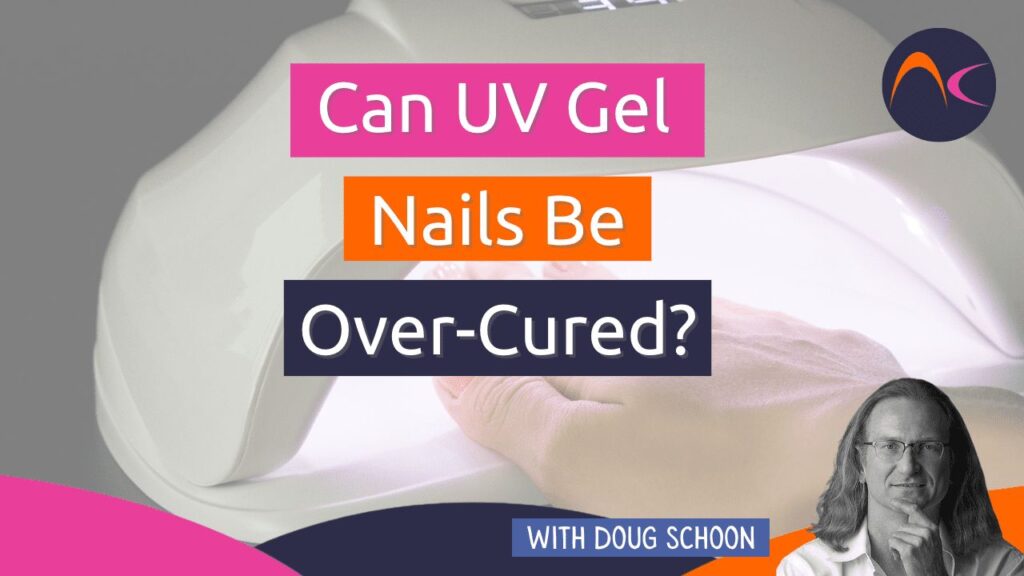Yes, they can, but over-curing is avoidable. It happens in two ways: 1) too much UV energy is used or 2) the nail coating is exposed to significant levels of UV energy after leaving the salon. In other words, UV gel nail coatings can be over-cured in the short term and/or long term.
Demasiada energía UV
When a nail coating is exposed to too much UV energy, it will cure too quickly. This can lead to service breakdown, nail damage, and even nail infections. How? All Los esmaltes de gel UV liberan pequeñas cantidades de calor when they cure. This is why some clients feel a slight warming. When over-cured, the same UV gel coating may become very hot, resulting in a painful nail bed burning sensation.
For example, a layer of nail coating designed to be correctly cured for two minutes under a fluorescent-style UV nail lamp can heat up quickly when cured under a LED-style UV nail lamp, heating the nail bed in excess of 120oF (48oC), which can result in painful burns that may lead to nail plate separation (onycholysis). Onycholysis allows bacteria easy access the nail bed, making infections easier to occur. Over-curing can make nail coatings more difficult to remove, which can lead to nail damage. Why? Surface white spots often occur when products are scraped from the nail plate with too much force. When nail coatings are more difficult to remove, scraping damage is more likely.
Exposición UV después del servicio
UV gel nail coatings can also be affected by tanning beds and natural sunlight. Poorly formulated or incorrectly manufactured nail coating products are more likely to be brittle, discolor, crack, break or lift (i.e. excessive free edge chipping) and it’s often due to continued UV exposure. Certain ingredients in lower-quality nail coatings can turn dark brown or yellow with continued UV exposure. Long-term UV exposure can cause some nail coatings to lose their flexibility and become more brittle, Do It Right- Never Accept Substitutes!
How can nail technicians avoid over-curing nail coatings? One of the best ways is to always use the UV nail lamp specifically designed for the UV nail coating product of your choice. Follow the manufacturer’s instructions and heed all warnings.
Properly maintaining the UV nail lamp is of great importance. Replaceable UV bulbs must be changed on a regular basis to ensure proper curing. Heavily used UV nail lamps may need bulb replacement every three months; moderate use may require bulb replacement twice per year. It is VERY important to use the replacement bulbs supplied by the UV gel product/lamp manufacturer. NEVER substitute for another UV bulb type or brand. Incorrect bulb use results in improper curing and potential hazard to the client’s skin as some bulbs are NOT intended for use with UV nail lamps.
Las bombillas UV de alta calidad pueden costar más, pero a la larga, intentar ahorrar dinero comprando bombillas más baratas probablemente cueste mucho más de lo que ahorre.
Más información sobre los geles UV aquí:
Picos de calor
Encogimiento del esmalte de gel UV


